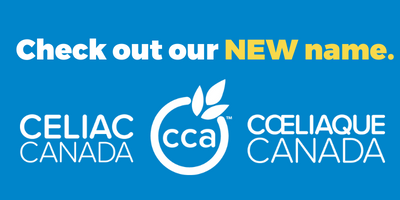If you or someone you know has been diagnosed with celiac disease, you probably have a lot of questions. We understand that this diagnosis can be upsetting, but celiac disease has become much easier to manage than in the past. There are many gluten free products that make gluten free eating much less of a challenge.
The first thing you can do to feel better is to understand exactly what you’re dealing with.
Celiac disease is an autoimmune disease in which the immune system no longer recognizes gluten. When gluten is eaten, it sets off an autoimmune response and the absorptive surface of the small intestine (known as villi) is attacked and damaged. Continued deterioration of the villi can have many serious effects, including malabsorption of important nutrients like protein, fat, carbohydrates, vitamins, and minerals, which are necessary for good health.
It is estimated that 1 out of every 100 people in Canada is affected by celiac disease. Many of them are still waiting to be diagnosed. People of any age, from infancy through old age, can be diagnosed with celiac disease, and you don’t outgrow it.
Symptoms
One of the reasons celiac disease is often misdiagnosed is that there is such a wide range of symptoms. Common symptoms include anemia, chronic diarrhea, weight loss, fatigue, cramps, bloating, and irritability. People may have one or more of these symptoms, or they may have none and instead develop an intense burning and itching rash called dermatitis herpetiformis.** The intestinal symptoms of celiac disease may or may not appear in dermatitis herpetiformis. Dermatitis herpetiformis is controlled by medication and the gluten free diet.
A definite diagnosis of celiac disease can only be made after performing a biopsy of the small bowel, which must be done by a specialist in the gastrointestinal field. That being said, the anti-transglutaminase (anti-TtG) blood test is often used first. This blood test is used to determine whether a small bowel biopsy is required, but it does not diagnose celiac disease. Please note that an individual must be actively consuming gluten for the blood test to be accurate.
Treatment
Right now, celiac disease has no known cure. But it can usually be effectively treated and controlled. That means sticking to a gluten free diet for life. If you have celiac disease, you must read the list of ingredients on all labels, every time, to make sure products do not contain gluten. In addition to checking ingredients, you must also be aware of cross-contamination. It can be a bit time-consuming, but it is important for people with celiac disease to carefully check the ingredients of everything they eat.
Other Names
Other names for celiac disease include celiac sprue, gluten-sensitive enteropathy, nontropical sprue, and coeliac disease.
Also visit the www.celiac.ca for more information on dermatitis herpetiformis.

